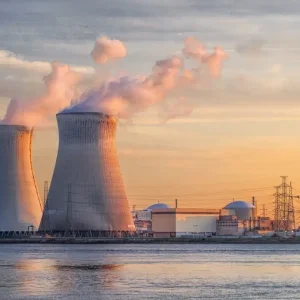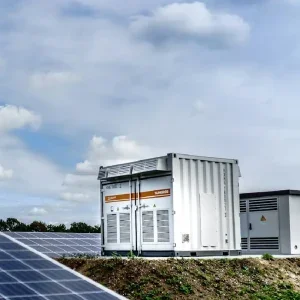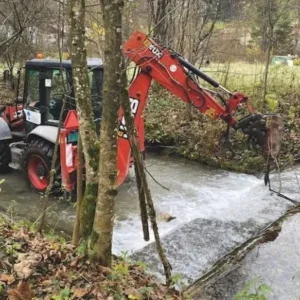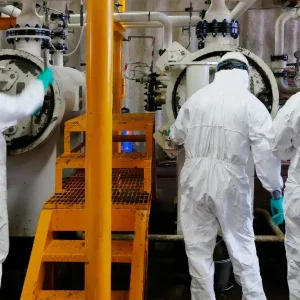
To ensure that dams related to oil and gas development are safe — and considering the potential damage that a failure could cause — the last thing you want to do is hold back, especially when you’re trying to hold everything back.
So when the Auditor General of Alberta told the Alberta Energy Regulator (AER) to develop a new dam safety programme in 2015, we promised it was going to be robust, efficient, and relevant for the future.
But let’s back up for a moment. If you asked most people about what the AER actually regulates, "dams" don’t normally come to mind — but then again, some people still believe we regulate electricity and gasoline prices. In fact, the AER is the single, full life-cycle regulator of upstream oil, natural gas, and coal development in the province — from application and exploration, to construction and development, to abandonment, reclamation, and remediation.
However, dams are new territory, and when we took responsibility for regulating them from the Government of Alberta in 2014, we had to get up to speed quickly. We needed to become experts in dam design, construction and operations, and we needed to create a new system to ensure Albertans are safe and that containment facilities are up to par. It’s worth noting that most of these structures contain process-affected water and tailings from mining operations, although the AER also regulates structures for oil production including raw water storage.
The urgency to create this programme was heightened when the auditor general’s report stated that, in recent years, dams in Alberta were not being appropriately regulated and that no performance metrics, analysis, or improvements in dam safety were being prepared.
To drive home the importance of proper dam safety, the report highlighted three significant events involving dams in western Canada, including the failure of the Obed Mountain Mine in October 2013, which released a large quantity of processed water into the Athabasca River, a major Alberta waterway.
Armed with a series of recommendations, new information, and unwavering determination to meet our standards in regulatory excellence, the AER was ready to build a watertight dam safety programme.
First steps
To meet this goal, teams at the AER worked diligently to create:
- A control system for design, maintenance, and surveillance.
- A regulatory system for inspections, performance reviews, and approval of dam designs.
- An independent expert review board to advise on tailings management practices, from design and construction to closure and decommissioning.
- A plan to prevent integrity loss and make sure no shortcuts are taken during tough economic conditions or for short-term profitability.
Owners are responsible for the safety of their dams and for complying with regulatory requirements. The AER’s role is to ensure that owners are managing their dams in accordance with regulatory requirements, government policy, and industry best practices.
Guidelines
Once our initial homework was done, we established control measures based on the full life cycle of each facility. We then began assessing risk, based on the Canadian Dam Safety Association’s (CDA) Consequence Classification along with operator history and performance.
The risk-based, life-cycle methodology has three components:
- Consequence classification
- Owner self-assessment of its own dam safety programme.
- AER validation of operator performance through desktop review, regular inspections, and site audits.
The level of caution that owners take in designing dams is informed, in part, by the CDA’s Dam Safety Guidelines and specifically by the consequence ratings system. The consequence rating provides half of the weighting of the initial risk assessment.
Additionally, dam owners must have a fit-for-purpose dam safety programme to safely manage their dams. We ask dam owners to periodically self-assess their safety measures — examining all areas of management, emergency preparedness, design, construction, and performance. The answers allow us to understand the owner’s dam safety program based on complexity, design, record keeping, and history.
The risk assessment takes all of this information and creates a numerical score for each dam. Then a heat map, which we use to prioritise inspections, plots each facility.
We try to avoid reaching the top right-hand corner of the risk assessment matrix, which indicates a "very high" or "extreme" consequence dam that is at high risk of failure. Before reaching such a severe classification, the AER would issue orders and take enforcement action against the dam owner to eliminate safety concerns.
To ensure we’re using staff time efficiently, inspection frequency is determined based on the consequence of a structure. When the consequence or risk increases, so does the inspection priority. For example, structures of "extreme" or "very high" consequence are inspected by geotechnical engineers who have a specialised skill set and advanced technical knowledge in certain areas.
Inspections of "high" and "lower" consequence dams are led by general inspectors who have a broad spectrum of environmental knowledge. In all cases, engineers and inspectors work together to ensure specifications in each facility are properly assessed.
If we discover poor performance during any inspection, we will continue to monitor the facility and provide direction to the owner. When we see good performance, we inspect less frequently.
In the unlikely event of a dam failure, AER staff will assist the operator in coordinating its response, and, depending on the severity of the incident, the AER might also engage the Provincial Operations Centre during a local state of emergency.
Inspection results
In November 2015, we released our findings from the first series of inspections carried out on regulated dams.
We focused on signs of potential failure of a structure, including indicators of potential spillage, slope instability, internal and external erosion, ground settlement, and groundwater contamination.
Inspections of 55 oil sands structures and 14 oil and gas structures did not identify any significant deficiencies. Our staff also inspected 31 coal mine structures and only discovered one significant deficiency.
Confident
With our dam safety program now in place, we’re confident that we have exceeded the recommendations from the auditor general’s report, which we will continue to do. And as the manager of the AER’s Dam Safety Programme, I’m proud of the way our engineers, inspectors, and support staff came together in short order to tackle a brand new regulatory function.
True, the spotlight on environmental protection and energy development gets bigger every day, but the AER remains as vigilant as ever, enforcing policy set by the Government of Alberta, and ensuring that regulations in all areas of oil and gas development — including dam safety — are being followed.
Blair Reilly is the Dam Safety Manager at Alberta Energy Regulator in Canada. www.aer.ca






